To master your track, you might need to have the right equipment. You have fully equipped with low impedance and as brutal sound as possible, most likely so much authentic as the wave of digital audio and thus giving you room to understand certain noise is to be truly equalized. And to be able to monitor your track correctly. In that use rather gaming headphone, earbud, and original studio headphone. As soon as you manage the right level in all you know the distance to your music, and how high you can push sounds out in the master. Not only one thing will most often suit one producer, as best is to have the worst sounding cheap headphones. These are more authentic and do not sell since the makers can’t sell them since they sound bad. And bad is what you need!
I recommend THX soundcards, which gains your track’s properties to fully work with certain types of speakers and headphones to even earbuds. Remember that some soundcards don’t play your harmful sound levels, and even with ultimate distortion, your track might sound glorious! So a soundcard is often the eternal holy grail depending on how much it actually filters, so be aware that most all generic motherboard audios will give you good decent quality on a little equalized track!
You want the terrible sound, but as well as resonance and even know the depth of your track. Then I recommend the THX Sound Blaster SB-1300 with especially Razer Kraken. But you might want the next new one 32bit and G-6 by Sound Blaster, that is even freaking awesome, and has that Recon3D for 3D stereo sound in music.
Why buy a gamer setup? Well, it’s because this option is precisely for the best possible monitoring. You will struggle 2-3 years and never be fully accepting your track under these circumstances that most tracks sound bad in that setup. But eventually, you’ll become state of the art best producer under such means if you do proceed to get such setup.
To the mastering of your track. Remember that all instruments have the 3000Hz center, which occupies too much in most tracks. A bump of -3dB in the center of 3000Hz most often is the right choice. We do this like this in FL Studio on Master, but you might do that as well for each sound that has a high level. When you reduce 3000Hz centers, you will enable your listening capability to be with more sounds; this is often needed when you have tenfolds of sounds and instruments in your track:
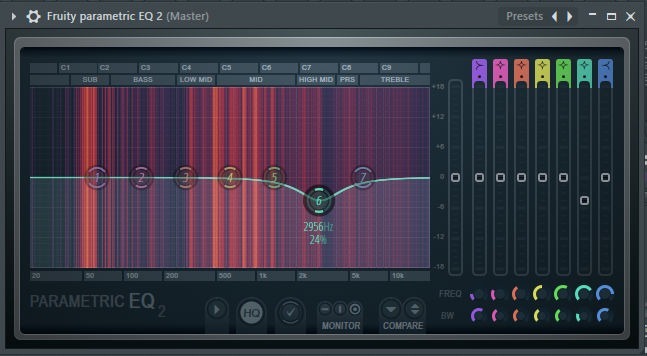
This reduction is, by the way, something that claps and snares have a hardish dense color right in the center of 3000Hz+, and therefore, some levels though are proper as well to reduce for these samples.
Recommended as well is to use on Master:
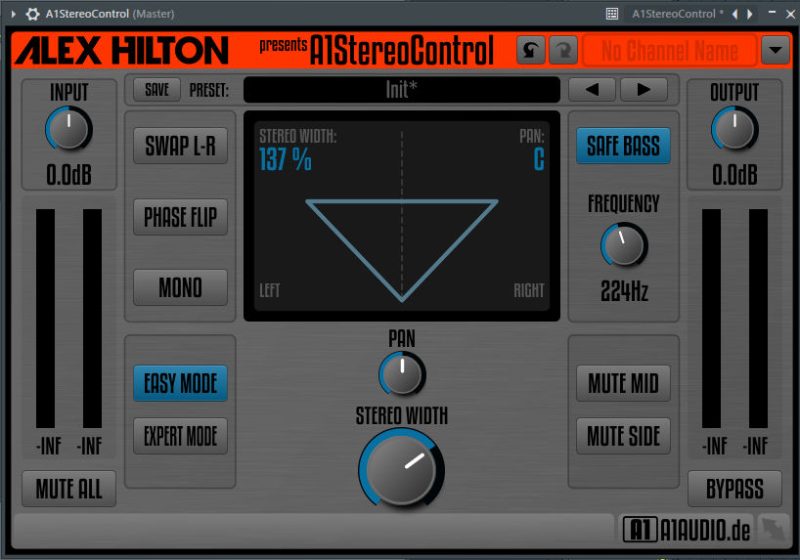 A1StereoControl: Download link 2MB:
A1StereoControl: Download link 2MB:
A1StereoControl-x32 at loopswag
While we only adjust 137% Stereo Width for your track, it can do miracles for a better stereo feel.
As well remember to put on Safe Bass for 224Hz.
Then you can add on your track TDR VOS SlickEQ.

Get familiar by adding a -1.7dB to -4.7dB on 224Hz center. It will remove resonance problems for most tracks. But as well opens for more spectrum room for your track. As it auto masters your track in the center of 224Hz. This reduction isn’t a bad idea and can remove the tension of muddiness in the center of 200Hz. That way, your track will probably sound lighter, and people will most often hear your track slightly better. Sometimes it’s good to have different monitoring equipment to find the perfect spot range. That you, of course, you should remember to work with. Reducing -3.1dB with SlickEq, you don’t cut these levels up to that. Even -12dB does not entirely remove the range. But -12dB can be tough removal on the mid-range.
Download TDR 6MB:
TDR VOS SlickEQ – at loopswag.com
While you want to master your kick in your track? Try adding Maximus and do this trick for any drum you might have:
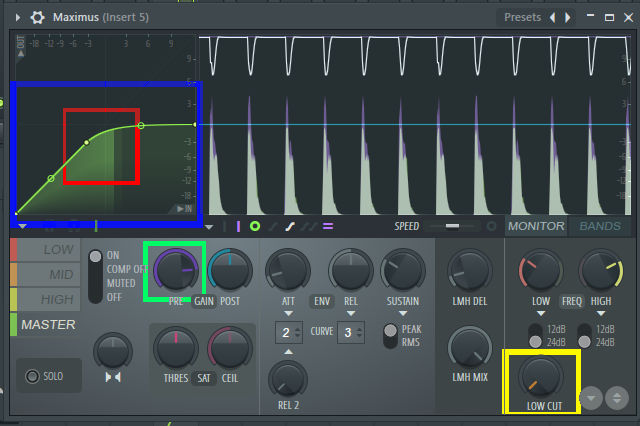
By adding PRE gain Green.
You can gain a mighty level on the default preset of Maximus. Remember that all bands are set on default, so sometimes you might need to turn off other groups off if it’s hard to clip limiting.
LOW CUT yellow:
You don’t want to cut low frequencies with Maximus. That way, you will struggle with your kicks and basses. Try never to use LOW CUT on Maximus, especially on Master. Since it has a processing problem for the Maximus and it is often terrible. And it’s to bad for Maximus.
The full blue
Shows the envelope in Maximus, this envelope can be edited. Into Soft Clip, as shown in the red field.
That way you will soft clip your kick, and you will then have a more sine wave to the kick at it’s higher frequencies as well as lower. But distortion will not work on this occasion that fully well. Remember what you do if you have distortion on with a sound.
And Maximus on Master?

Here you see, the bass and kick are limited at -2dB with this envelope. You don’t need a higher level for kicks and drums as that is the total max you can get for a 0dB track without master channel limiting too much, and you get a bumpy kick when there is frequency fight in the wave. And it occurs when there is much in the frequencies fields across the whole frequency spectrum. But remember that having a lower value as described by us, is to actually use -6dB kicks, and that is even enough for most tracks.
We do recommend that you keep your kick levels to around -6dB from 0-100Hz and lower range from 100Hz+. Do monitor in some equipment maximum lowest, if your system is possible to play a right level of sound at even -6dB, why not stick to -6dB. Some musicians do not tend to overpower their tracks, and the beginners often don’t overbalance their track, keeping a maximum-minimum in their track and make a breakthrough with their tracks!
For bass? You want to master it to -6dB to the master sometimes even at a lower range of also -9dB would be the right choice. Remember the Maximum Minimum!
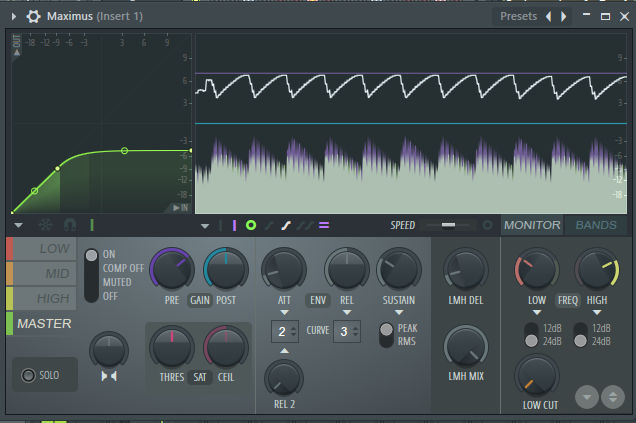
Here you see in the example that bass is auto-mastered at -6dB and as well compressed. That way, your bass stays at -6dB, and it’s higher in volume at most. Remember to Equalize your bass after this. A good tip is to equalize before and after the Maximus on bass. But stay at max -6dB with the bass on your tracks. At fully knowing the maximum range of bass, it’s often around -6dB to about -9dB. Your bass might play well at even -12dB. But having a higher level than -6dB for bass can be of too high levels.
We truly recommend -9dB for your bass. If you feel it, then most will feel it. Unless even at -12db. But pushing your bass beyond -6dB can be fatal and too hard, and most review your tracks as to bassy at that level. But of course, often the levels from 0-100Hz should be at -9db. But then you have levels from 100-200Hz. That should lie around -12dB in actual height. Since these often are played enough high by any speakers.
With the mid?:
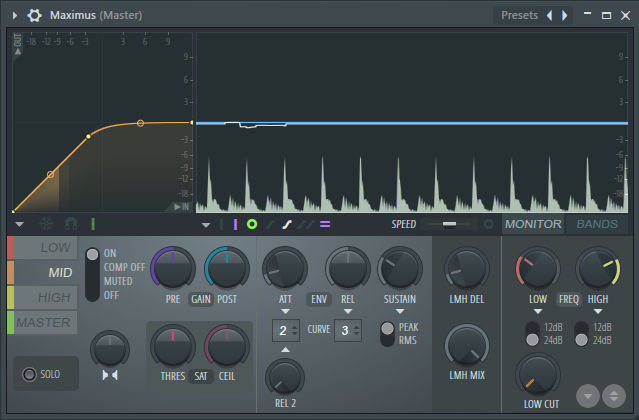
Monitor your kick as well on the master with Maximus. You see that it has too high levels from 200-3000Hz. Most often, you don’t want the kick to have more than -12dB pressure in the track or even at max -9dB for frequencies around 200-3000Hz. So little edit for the kick was done especially here, remember that levels from 3000Hz to 22000Hz can often as well become too high if you maximize the sound with Maximus.:
Even just a tiny change of Parametric EQ 2 can make miracles like here, it’s something that is not logic about FL but a tiny bump can do miracles to any things. Even that little adjustment is very hearable in certain dynamic tracks:
At second Parametric EQ 2, we reduced the kick levels.
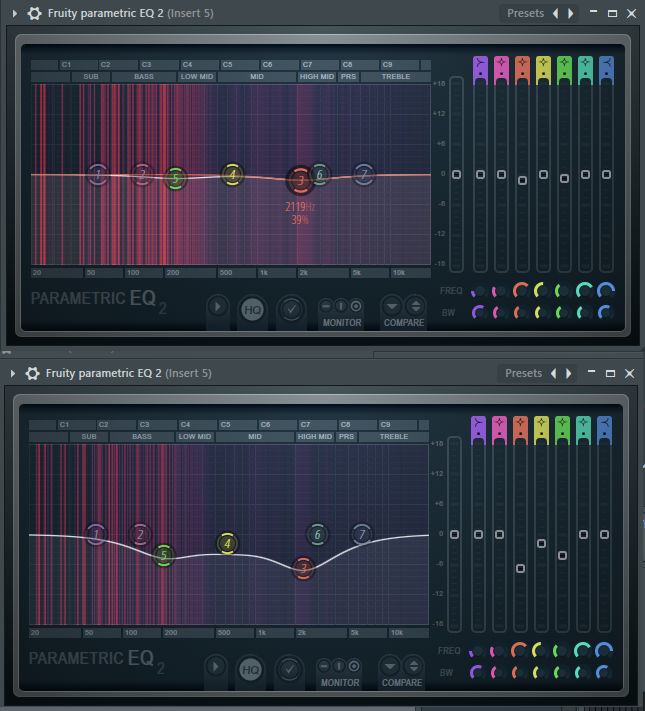
As well as trying to reduce these levels of -6dB to -12dB. It plays well as a kick in total.
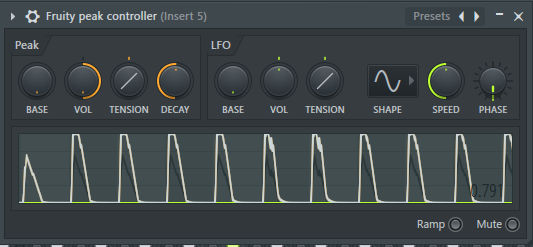
You should try using peak controller on a kick making it chops like this. Therefore you can use this to sidechain your bass with the kick. Change the decay more up to the right in the peak controller as you reduce the peak strength.
The whole Sidechain Tutorial is here:
How to Sidechain? Your bass with kick! Learn a new and probably best Technique
Try adding this to a bass: “use the preset 40Hz cut and drag it to 200Hz with your middle mouse wheel.
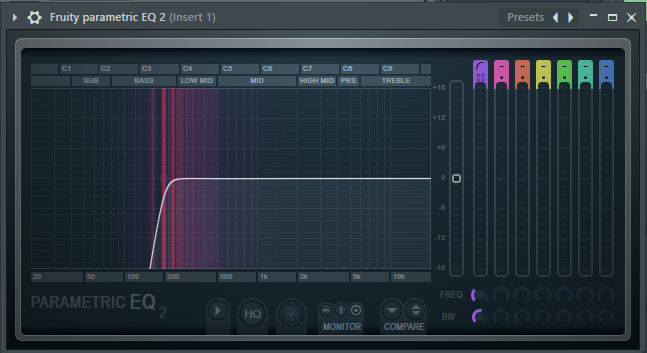

Link the volume to the peak controller by the link to the controller.
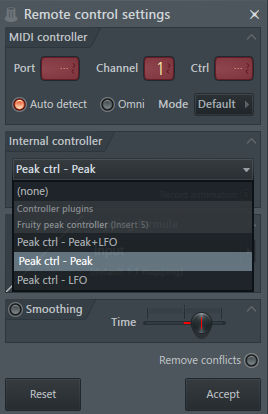
Choose then Peak ctrl – Peak and accept.
Then you will need to edit the bass ms time for bass to be perfectly matching the sidechain and the kick.
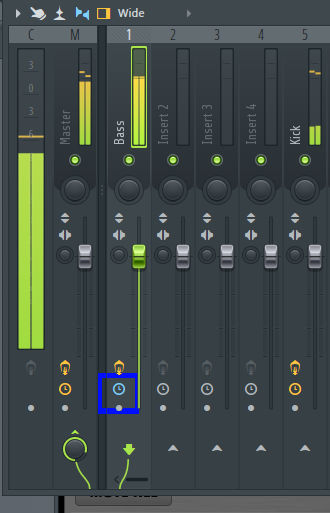
Set your time accordingly to open bass frequencies in Maximus, as you will see in the Master. Don’t let the kick play at the same time as the bass. And by adding 4 ms or six up to 8 ms to the bass will be more at the place without conflicting with the kick.
The blue color in the above picture shows the timing, and it’s often 8ms for basses. To have your track automated by delay compensation is a good option, then you don’t need to change ms for the kick. But in newer versions of FL 20, your kick should then stay -8ms without automatic compensation. But you should put it to -8. Yes, minus level. Often because sidechain isn’t easily automated in compensation. And it’s often important to look after the gaps as you see in this below Maximus. At ends, it removes bass levels.
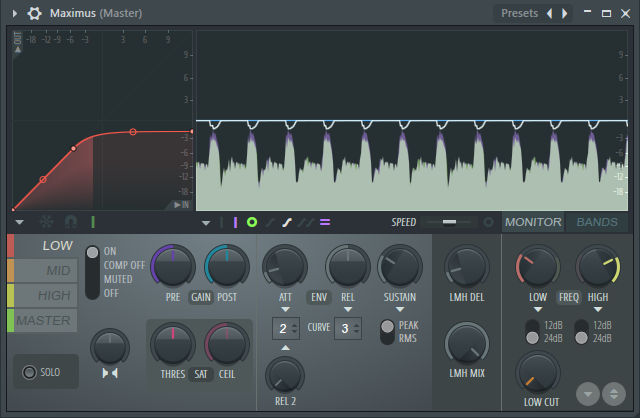
Set your Decay and Vol accordingly to this; you don’t want to have many sidechains going on, and most often, when used as this short decay kick, you can hear the kick as well as the bass. Remember that to hard sidechain is not good. And often cause a significant problem to a track

So that was tutorial on Sidechain, you might want to refresh more upon the above tutorial if it’s too hard this short tutorial to understand.
Another thing. On the master mixer, you can use this option to make -12dB high levels for frequencies above 3000Hz. Having higher than -12dB high frequencies is not recommended for a track. And why is that? Since some equipment plays poorly, the higher the levels are especially with earbuds they sound awful. Even on phones and Android to iPhone. Most have problems with their high frequencies and that’s nearly anyone.
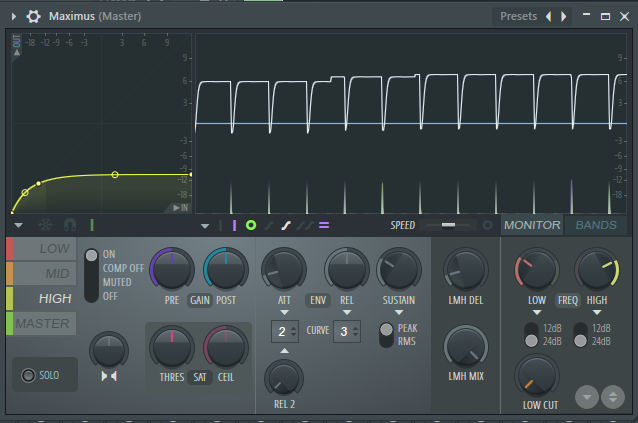
On Master, you should monitor your high frequencies if you have to much yellow in the upper field. Means your track has too much higher frequencies: As in with Edison, you can turn on view Spectrum. You need to record with Edison to visualize the wave.

Here is a look of a more proper track. It’s though less hard and has a less yellow color to the higher frequencies. Remember that some sounds might reveal to harmful levels in the higher frequencies:
Towards this, you should really consider making your track as the most possible purple and less yellow. A good dynamic track has a very purple-colored look on Edison. And does not contain that much yellow particles in the spectrum.
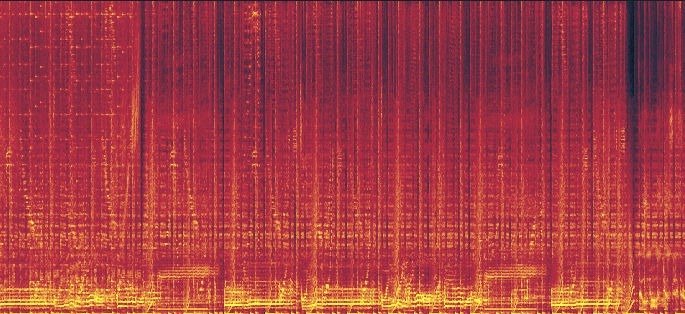
You can see this track has dense yellow on the bottom. Means bass is running high levels. A better standard level would be purple to orange color. In many tracks from the mainstream, these levels often don’t get to yellow color, and often lie around purple-colored look.
For your comfort, if you feel you can hear your tracks properties, you might not need to overbalance your track by pushing it to limit. Sometimes the right track can sound good for others if you keep levels more down than up. And if it sounds good, it probably is as well for most. Remember not to use Gucci headphones or anything that makes all tracks in the globe sound good; therefore, your quality will be ill bad.
Here you see an adequately mastered track, where there is no conflict of too high levels. And mastering is done through mixing the sounds properly for the master; it stays dynamic throughout the track.
You don’t want or need to master your track professionally if you do know how to EQ and put into some effort to equalize each instrument in your track.

Recommended is to turn equalization on each instrument by solo playing your sound.
You can solo play any sound by right-clicking on each mixer unit’s green led button.
Recommended use on Master is often 3000Hz cut and 200Hz cut. Of around -1dB.
You might need to turn the bass of the kick at maximums to master for this application of master mastering with Parametric EQ 2. But we do not always do that unless we used SlickEQ and as well had a certain proposition to equalize each of the most vibrant instruments with these levels as well.
It’s not always recommended, but as an end mastering, you might be hardly hard possible to edit all sounds that in total end up on Master Channel. So an edit just of frequencies that are in particular dense would be a signal of overpowered frequencies. Thus lowering these values would indeed be the right choice.
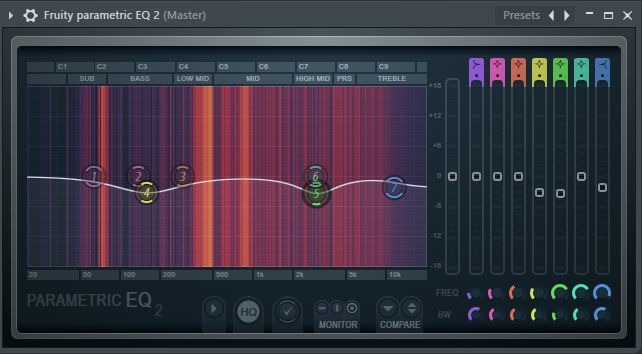
Recommended for the kicks is as well to use Transient Compressor:

The ATTACK is to add snap, or the first frequencies of a kick to be gained.
The release is to add in more boom or solid hard feel at the end of the kick.
You might remember this put on Master:
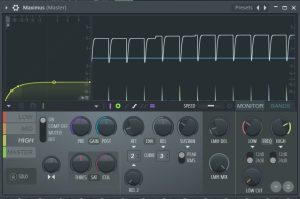
Do you see the curved envelope? That is to add distortion to the higher frequencies and glue them together. Test that out on your track, and it can bring a miracle to your track or tracks. Gluing all the higher frequencies along with distorted frequencies. Just remember always to use the default preset of Maximus. Never use any of the presets in the directory.
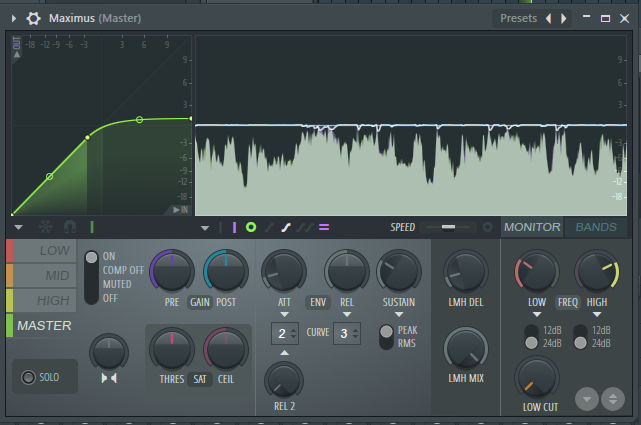
And for the master, your track will play 0dB if you don’t push bass to hard out and your higher frequencies higher as well.
A track is written in frequencies, and one wave consists of waves of the track. In another matter, you need to see that bass plays high frequencies together while playing the wave of sound. The wave is often sine but looks like a wave and consists of fast waves and short waves. But frequencies stay in between while having to hard bass can overturn all other frequencies making a limiting of a track a possibility while spectrum fights for frequencies. Don’t overpower your track!
Maximus Master Channel can be set with the envelope to +1dB and with a curve to do the type of analog edit to the limiting of up to 0dB.
Maximus has a +1dB problem, but limits at 0dB to little. So your track becomes -1dB in overall if you have a lot of limiting on the master channel.
If you followed these examples in this tutorial, your track most likely would play 0dB. So remember using Maximum-Lowest on your track as that is the more right thing to do with a track. To hard levels aren’t always best.
Remember that you can use another limiter at the Master channel than the Master channel limiter in Maximus. A recommended collection is at antress.blogspot.com plugin called ModernLimiter that you just can put into master.
Download the full toolset of plugins here, since they don’t any longer offer a download: But are free download all time even on their webpage until they fix their links.
Download: ModernFullPack at loopswag.com 47MB
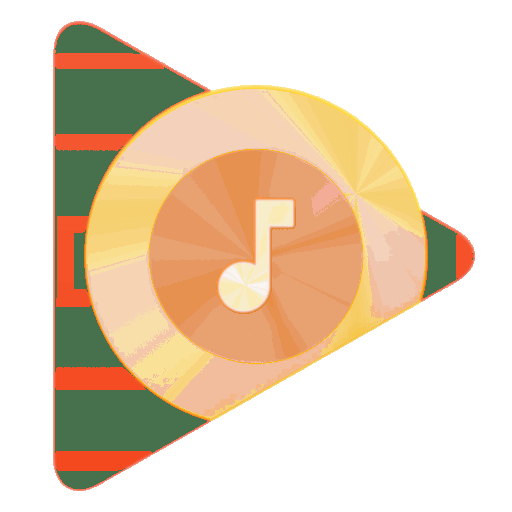
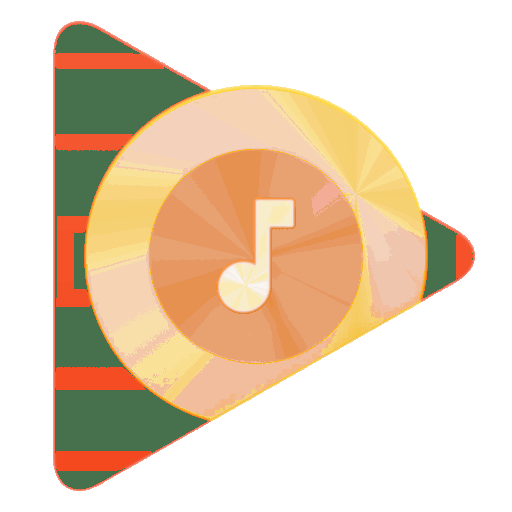
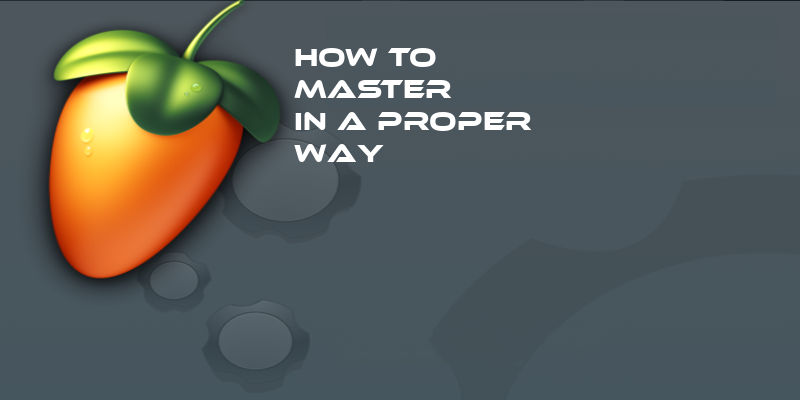
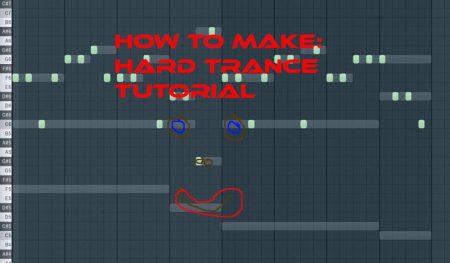
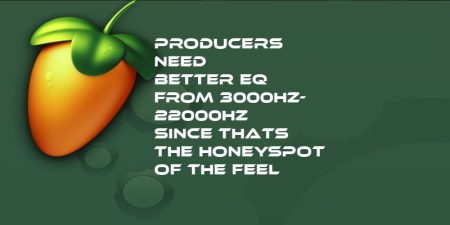
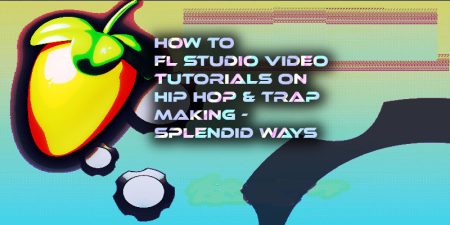
7 Comments
What’s Happening i am new to this, I stumbled upon this I have found It positively helpful and it has aided me out loads. I am hoping to give a contribution & assist different users like its aided me. Great job.
WOW just what I was searching for. Came here by searching for a proper way to master.
Thanks for the great article indeed.
hello!, I like your writing so much!
I used to be able to find good advice from your articles.
You have made some decent points there. I looked on the net for more information about the issue and found most people will go along with your views on this website.
It’s impressive that you are getting thoughts from this article as well as from our discussion made here.